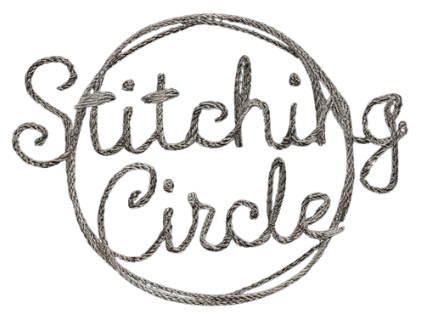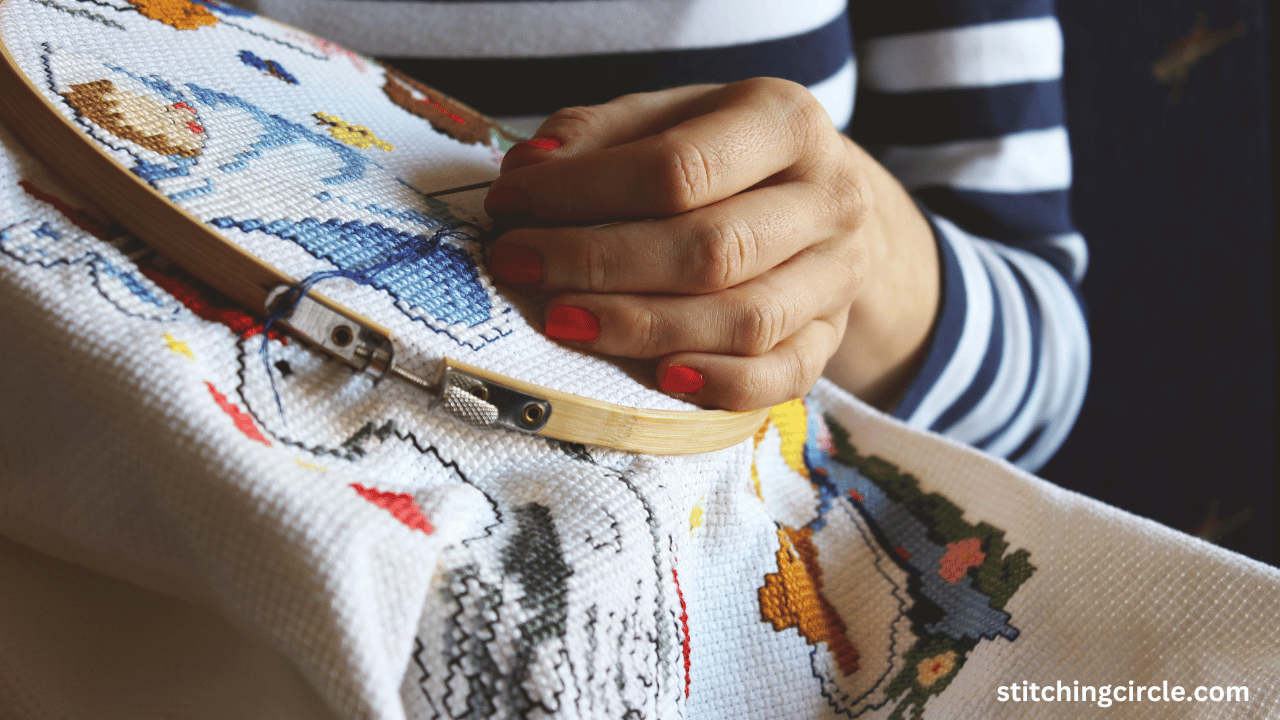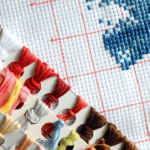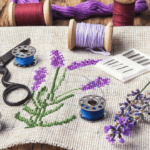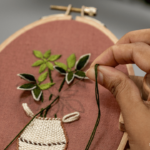Hello there, fellow fans of the stitching technique! Do you feel prepared to embark on an adventure into the delightful world of cross-stitching? Hold on to your horses for a second, because our next topic of conversation will be about something quite significant: needles!
Indeed, those minuscule details have the potential to either make or destroy your sewing experience. In this article, we are going to get to the bottom of the enigma surrounding selecting the appropriate needle size for your cross-stitch projects. Now, get a cup of coffee, and let’s get this party started!
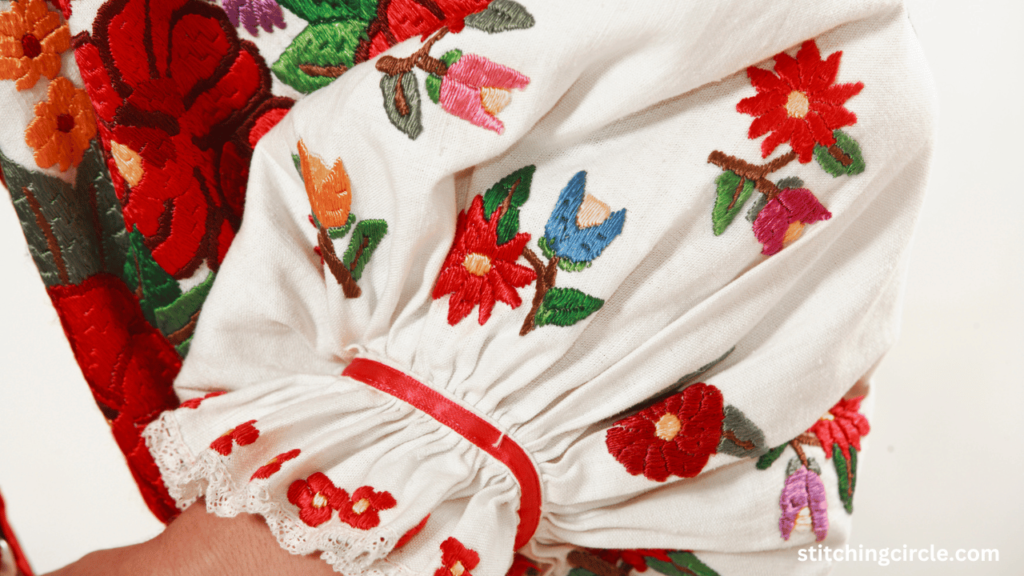
Contents
- 1 Acquiring Knowledge of Needle Numbers
- 2 Selection of the Appropriate Size
- 3 Number of Fabrics
- 4 Thickness of the Thread
- 5 It is essential to experiment.
- 6 Conclusion
- 7 FAQs
- 7.1 Q: What does the number on a cross stitch needle mean?
- 7.2 Q: How do I know what size needle to use for cross stitch?
- 7.3 Q: Can I use any needle for cross stitch?
- 7.4 Q: What happens if I use the wrong needle size for cross stitch?
- 7.5 Q: How do I find my perfect needle size?
- 7.6 Q: Can I use different needle sizes in the same project?
Acquiring Knowledge of Needle Numbers
In the first place, let’s get acquainted with the different sizes of needles. Some of the numbers that are printed on your needle packs, such as 24, 26, or 28, may have been brought to your attention. So, what exactly do they mean?
These figures are what you need to know according to the gauge or thickness of the needle. For a more straightforward explanation, the needle will be thicker if the number is smaller. Therefore, a needle with a size 24 is not as thin as a size 28. No problem at all, right?
Selection of the Appropriate Size
Now comes the most important question: what size needle should you use for the cross-stitch project that you are trying to complete? There are a few different aspects that determine the answer:
Number of Fabrics
The importance of the fabric count when establishing the needle size cannot be overstated. If you are working with a fabric with a higher count, such as Aida cloth with a rating of 14, you should go for a smaller needle size, such as 24 or 26.
On the other hand, a needle size that is somewhat larger, such as 28, might be more appropriate for use with lesser fabric counts, like as 18 count Aida.
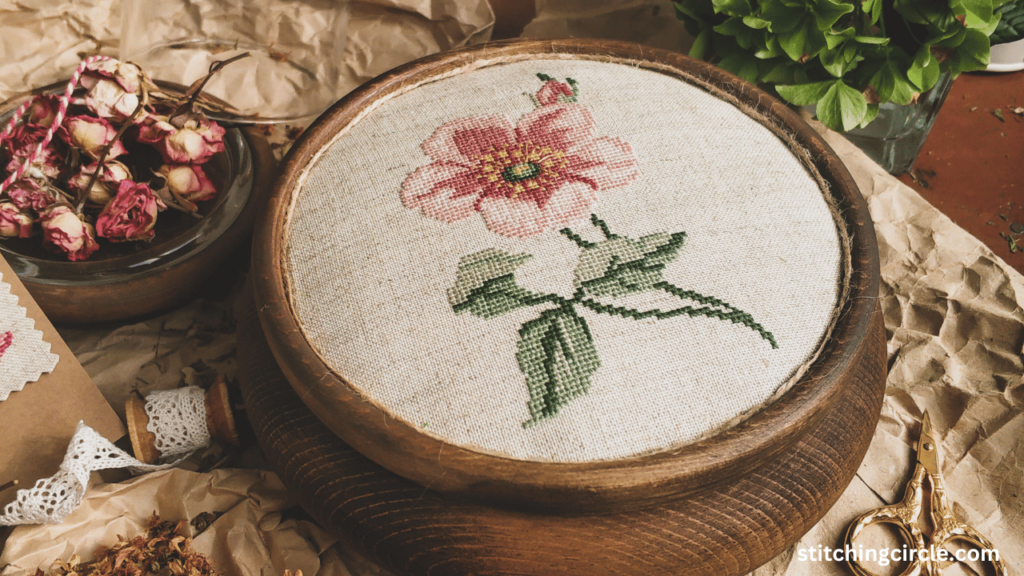
Thickness of the Thread
The thickness of your thread affects your choice of needle. It is recommended to use a bigger needle size when working with thicker threads such as tapestry or pearl cotton.
This will help to reduce friction and ensure smooth stitching. In contrast, finer threads, such as stranded cotton or embroidery floss, are complementary to smaller needle sizes, resulting in more exact and clean stitches.
It is essential to experiment.
Please keep in mind that there is no universal rule about needle sizes that applies to everyone. Finding the best solution for you and your project is the most important thing.
You shouldn’t be afraid to try out a variety of needle sizes until you find the one that works best for you. The process of cross-stitching is just as much about the journey as it is about the end result!
Conclusion
All right, there you have it: a beginner’s guide to selecting the appropriate needle size for your cross stitch endeavors. It doesn’t matter if you’re working on a giant masterpiece or stitching a pretty pattern for your grandma’s birthday; the most important thing is to pick a needle that is pleasant to use and enables you to create beautiful stitches with ease. Have fun as you stitch!
FAQs
Q: What does the number on a cross stitch needle mean?
A: The number on a cross stitch needle indicates its gauge or thickness. Generally, the smaller the number, the thicker the needle.
Q: How do I know what size needle to use for cross stitch?
A: Choosing the right needle size depends on factors like fabric count and thread thickness. For higher fabric counts, opt for smaller needle sizes (around 24 or 26), while lower fabric counts work well with larger sizes (around 28).
Q: Can I use any needle for cross stitch?
A: While you can technically use any needle for cross stitch, it’s best to use needles specifically designed for embroidery or cross stitch. These needles have a blunt tip and larger eye, making them perfect for smoothly piercing through fabric and threads.
Q: What happens if I use the wrong needle size for cross stitch?
A: Using the wrong needle size can lead to difficulties in stitching, such as snagging the fabric or uneven stitches. It’s essential to match the needle size to your fabric and thread to ensure a smooth and enjoyable stitching experience.
Q: How do I find my perfect needle size?
A: Experimentation is key! Try stitching with different needle sizes to see which one feels most comfortable and produces the best results for your project. It’s all about finding what works best for you.
Q: Can I use different needle sizes in the same project?
A: Absolutely! Feel free to switch between needle sizes based on different areas of your project. For example, you might use a larger needle size for outlining and a smaller size for intricate details.
